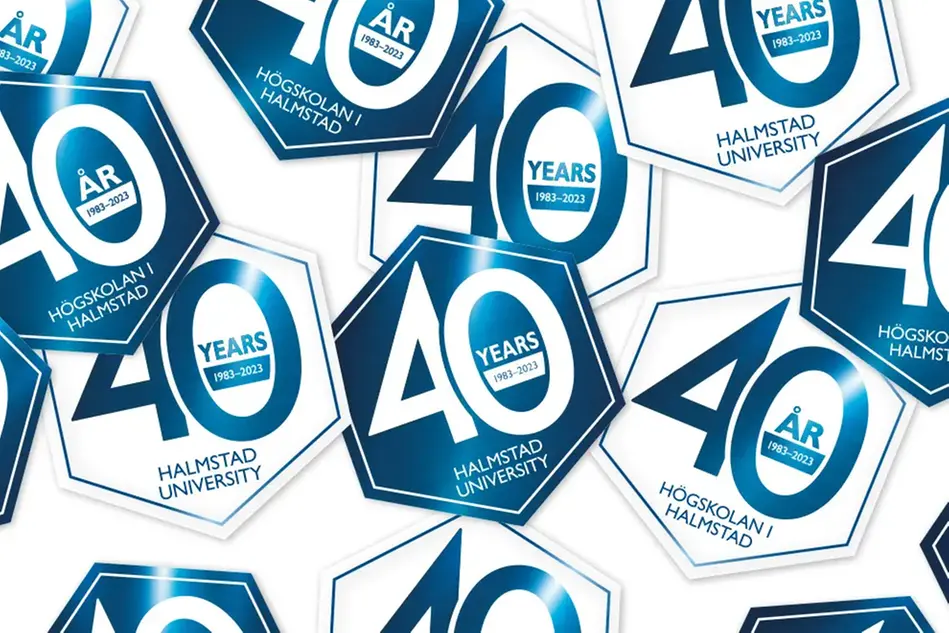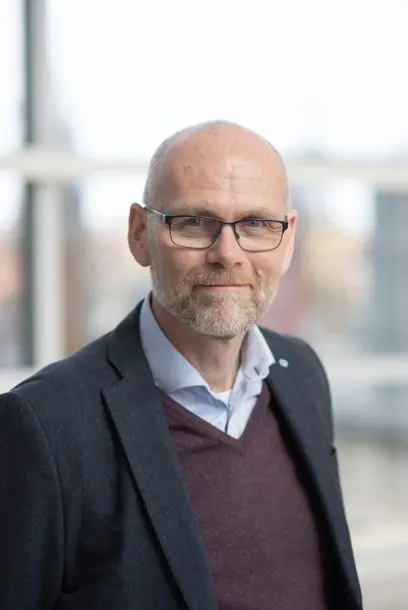“Halmstad University should be a jewel”
This year Halmstad University celebrates its 40th anniversary! And it was today, July 1, 1983, that we were granted the status of an independent university. In a series of chronicles, you will follow Halmstad University’s 40-year research journey, from no research to research for innovation. The first to do an exposé is Thorsteinn Rögnvaldsson, Professor of Computer Science and Deputy Vice-Chancellor with responsibility for research and doctoral education.
This is a personally written text. Any opinions expressed are the author’s own.
“We aim to be a high-profile university college that combines a high proportion of recruitment of students from non-academic households with employees with high scientific competence, research of internationally high quality and a very good link between research and education.”
Thorsteinn Rögnvaldsson, Deputy Vice-Chancellor

Will Halmstad University be granted full university status now? As we are now a university college, it is a question that I get asked sometimes and I always answer that it is doubtful whether it is a realistic or desirable goal. It is not that I doubt that we are skilled enough to have full university status, but my doubt stems from the fact that there are many things that must work together to be awarded that status, and there are few of them that we can influence. Instead, I believe that we should set our goals so that we can achieve them with our own work.
"Our goal is to significantly increase our research by 2020, a new golden period, to take the next step in the University’s development. We are well equipped to do it.” This is what I wrote ten years ago, when I reflected on the University’s research development in connection with our 30th anniversary. And we managed to do that: from 2012 to 2022, our direct government funding for research roughly doubled and our total research revenue went from SEK 112 million to SEK 204 million. In terms of our documented achievements, Halmstad University’s research has developed extremely well over the past 15 years. In the Swedish Research Council’s annual summaries to the Ministry of Education, Halmstad is today among the college universities that perform best. That is a huge difference from before 2007. The Chamber of Commerce and Industry of Southern Sweden placed Halmstad University at the bottom in a 2006 report on the southern Swedish college universities and full universities, and commented that ”Research productivity in the form of published articles is a bit so-and-so”. In 2007, we started a journey of change by starting to allocate funding for research based on achievements in research and not based on history or how many PhDs there were.

Thorsteinn Rögnvaldsson. Photo: Dan Bergmark.
For those who follow the Swedish political discussion on higher education, it is well known that there is currently no political interest in giving more higher education institutions full university status. Expressions such as excellence and elite, fewer rather than more are commonly heard. This is not a new discussion. All generations seem to have had advocates who pointed out that higher education and research should belong to a smaller elite. As early as 1946, Professor Tilander at Stockholm University College wrote that something had to be done about the ”unbridled influx” of students to universities, students who were largely ”unsuitable for higher education”. Seventy years later, in 2016, Professor Danielsson at Uppsala University wrote that the number of students in Lund and Uppsala should be halved, so that the programmes could maintain ”the highest international standards”. Training of broad student groups should be in university colleges where no research is needed because, for the vast majority of students, research affiliation is ”essentially unnecessary”.
Halmstad University meets the conditions to be a member of the European University Association. We have been doing this since 2010 when we were granted permission to award doctoral degrees. In 2009, LUM (Lund University magazine) wrote that it was remarkable that a degree from Halmstad University could be issued ”unprompted” and compared it to fake universities. In 2021, the Swedish Higher Education Authority (UKÄ) published a report on the criteria that a university college must meet in order to have the full university status. The report states that it is about successfully conducting your own doctoral education, having high quality in education, research and collaboration, as well as good links between research and education. However, UKÄ also states in its report that full university status is associated with increased resources for research, which is a political decision and that it is not possible to link more precise quality criteria to that decision. From what I understand from conversations with ”those who were involved”, university colleges that have obtained full university status have done so because there have been very strong advocates outside the university who have pushed at the national level. Here I am unsure if Halmstad University has strong enough supporters.
In retrospect, it is clear that the journey of change that began in 2007 has had a strong positive effect, and the university colleges that currently perform at the top according to the Swedish Research Council’s compilations all have performance-based systems for internal allocation of research funding. If you study Halmstad University’s performance over time, three things are clearly positively correlated with strong research: the staff’s level of competence (the proportion of PhDs), the ability to obtain competitive research funding and to publish in high-quality scientific channels.
Ten years ago …
”When the University was established in 1983, we received no funding at all for research. The number of PhDs is low. In the beginning, only two out of just under 40 employees have doctoral degrees. The management immediately sets the goal of establishing research and development on the grounds that it is necessary for a university college to function in the best way. It is also clear that research should be characterised by collaboration. Thanks to diligent work from teachers and management, Halmstad University receives external research and development funding from the Foundation for Technical Development and from the County Administrative Board of Halland, which continues to support research for many years. Centres are started to gather staff around common research issues. During the University’s first ten years, we succeed, among other things by attracting additional research funding from the local business community, to achieve about ten percent research (in relation to total turnover) and about 20 permanent employees with doctoral degrees, active in twelve centres.”
From the article ”From no research to research for innovation”, Thorsteinn Rögnvaldsson, in Samspel research magazine 2013
Having succeeded so well over the past 15 years raises the challenge of how we can continue to develop strongly in the future. Does anything need to change? The University’s strategy process during the years 2019–2021 intended to explore this and there three weaknesses stood out in the external panels’ comments: (1) lack of vision in the research environments, (2) the research environments were not clear in how they contributed to the University’s two focus areas and (3) the link between research and education was weak in almost all environments. This led to the Vice-Chancellor's decision to establish strategic research programmes – new groupings for continued strong development.
The investment in the research programmes is a challenging research initiative to which we are directing strategic resources to a greater extent than ever before. So far, five research programmes have passed quality review and have been recommended to the Vice-Chancellor to be established and funded. The planned research funding for these five research programmes is the same per year as for the Knowledge and Competence Centre we have recently completed, and it accounted for 80 per cent of the University’s research during the period. The expectation is that the proportion of external funding to the research programmes will be as large as to the Knowledge and Competence Centre and that the University will develop at least as strongly in the future as during the ten-year Knowledge and Competence Centre period. It is a very ambitious venture and, just as with the Knowledge and Competence Centre, we must follow developments and resources closely.
With the research programmes, we have the resources to achieve ambitious goals on our own. We will continue to be at the top among university colleges in the Swedish Research Council’s annual statistics. To be there, a high level of competence among the staff, a high degree of external funding for research and good publication strategies are required. We will continue to build our national profile. This is achieved by the research programmes strengthening the focus areas and working with a high proportion of collaboration with external parties outside the academic system. Halmstad University should be a jewel in the Swedish university and college landscape. We aim to be a high-profile university college that combines a high proportion of recruitment of students from non-academic households with employees with high scientific competence, research of internationally high quality and a very good link between research and education.
Thorstein Rögnvaldsson
Footnote. The University was a Knowledge and Competence Centre during the years 2012–2021, appointed by the Knowledge Foundation. The intention was to build a strong and multidisciplinary profile for Halmstad University.

